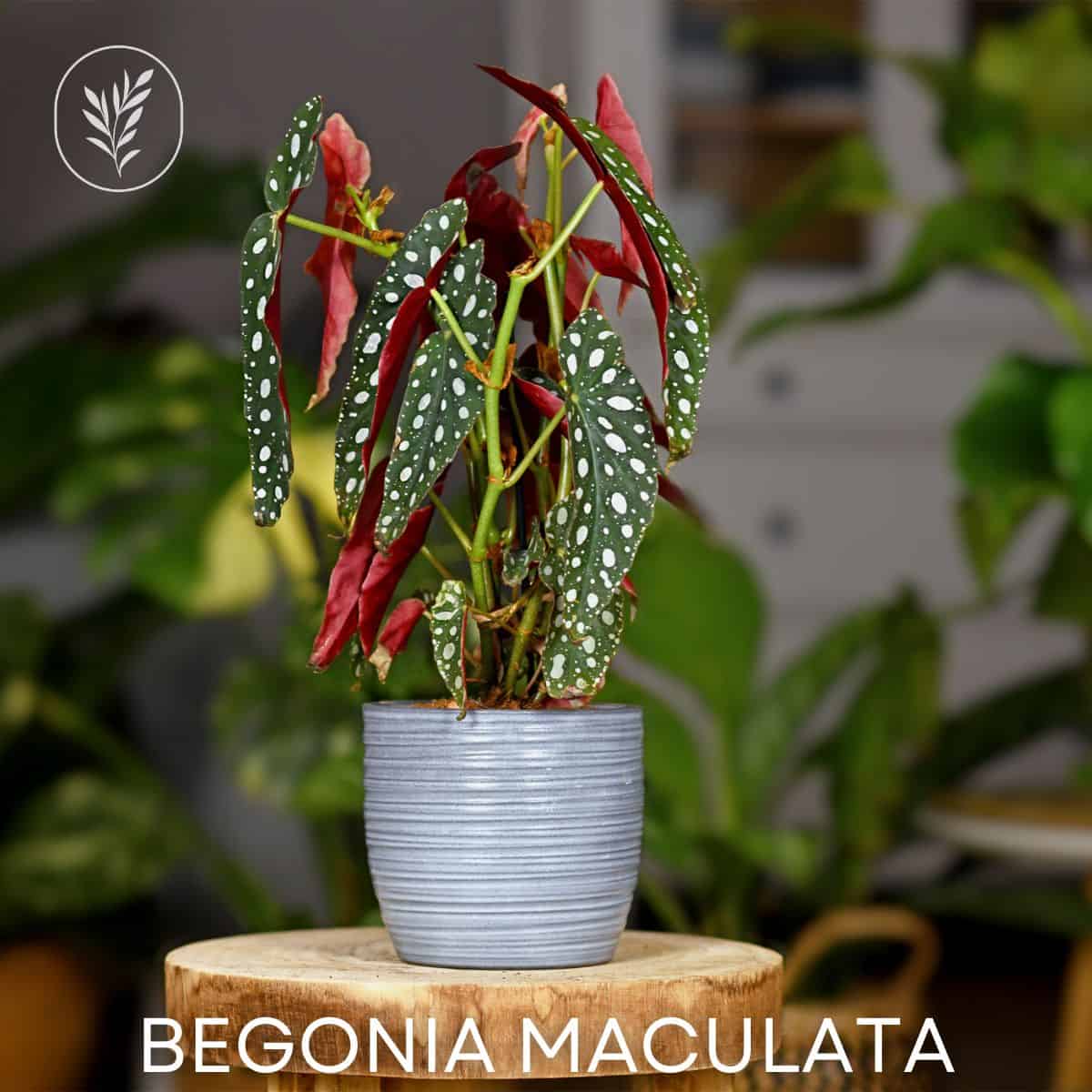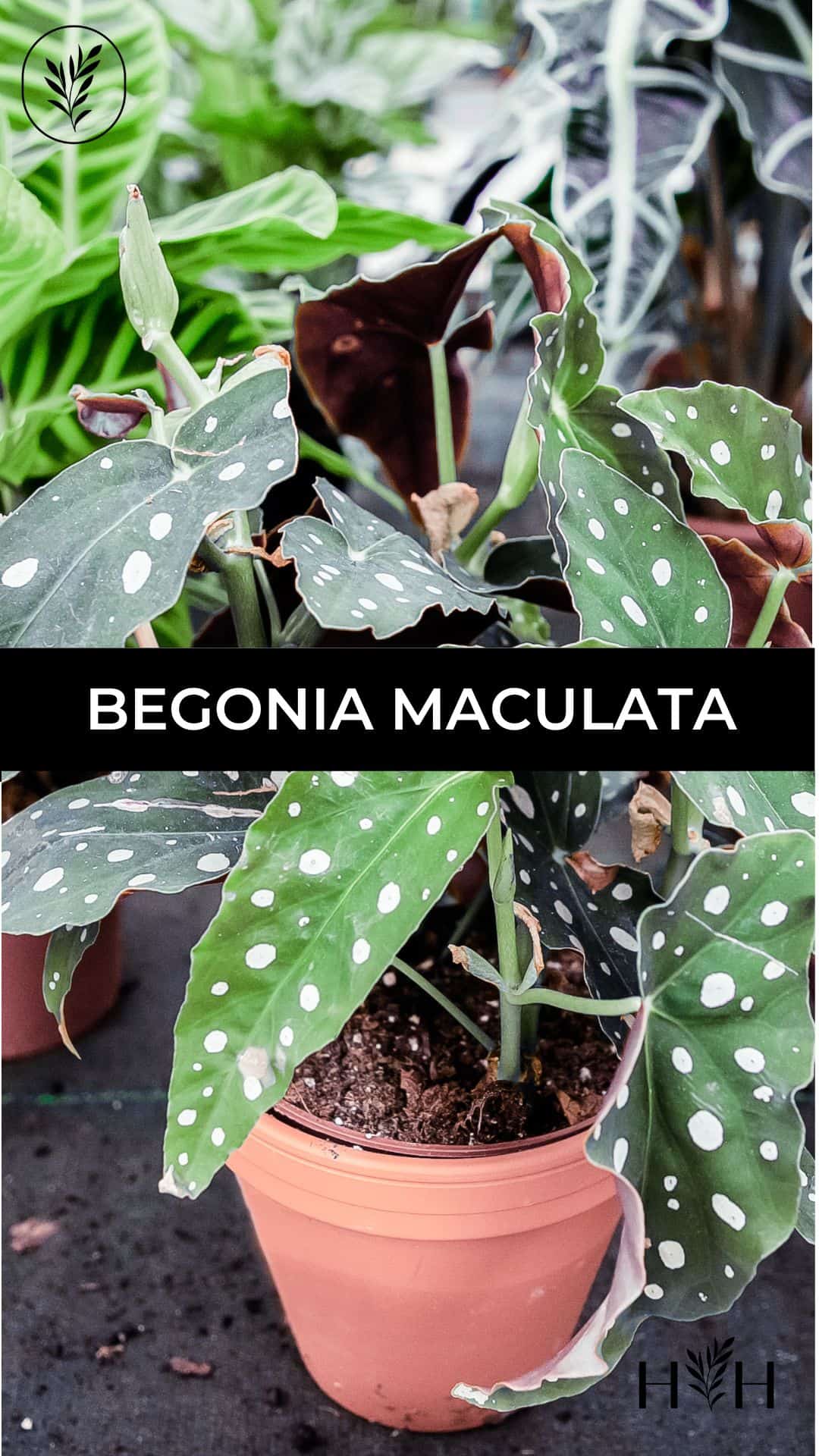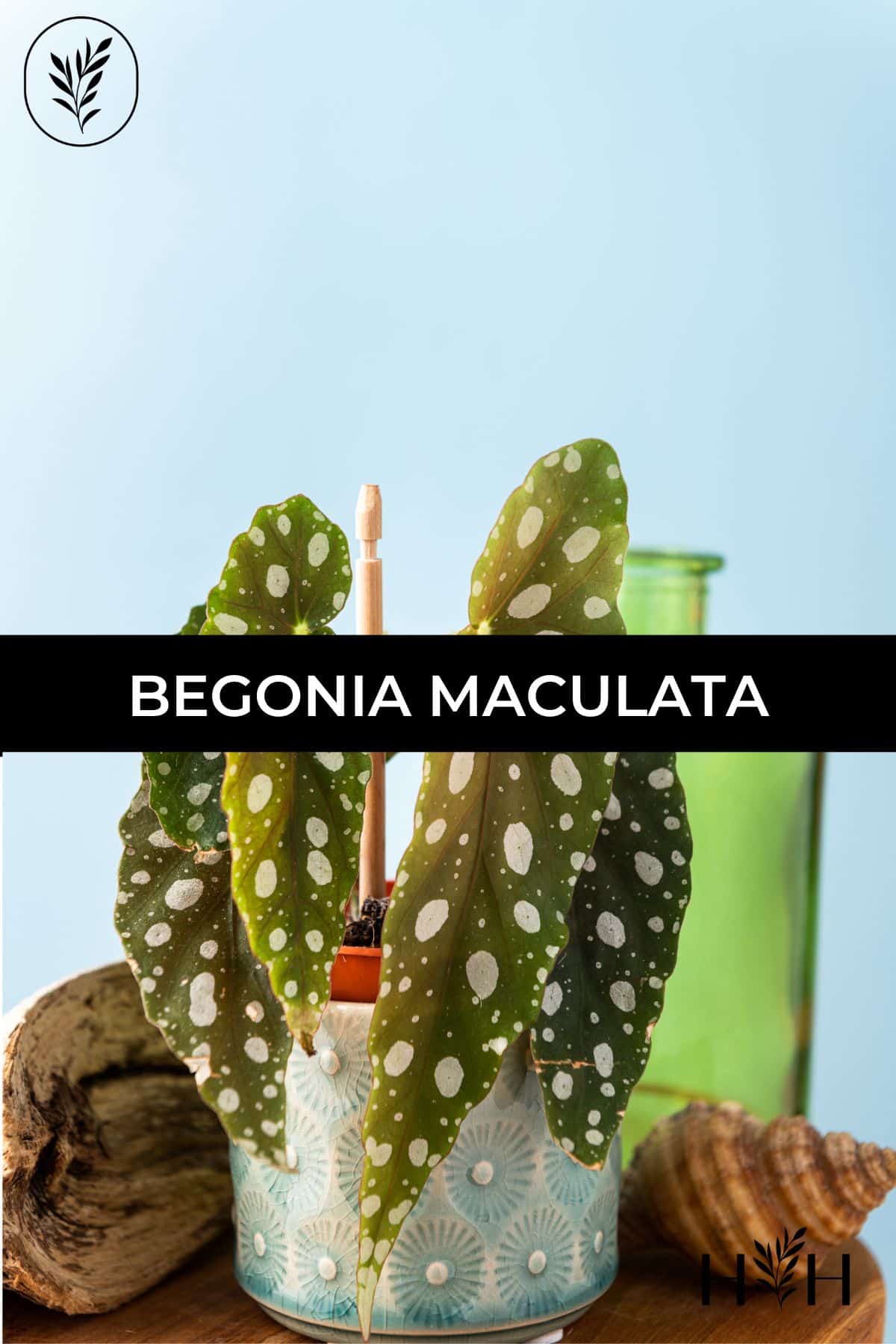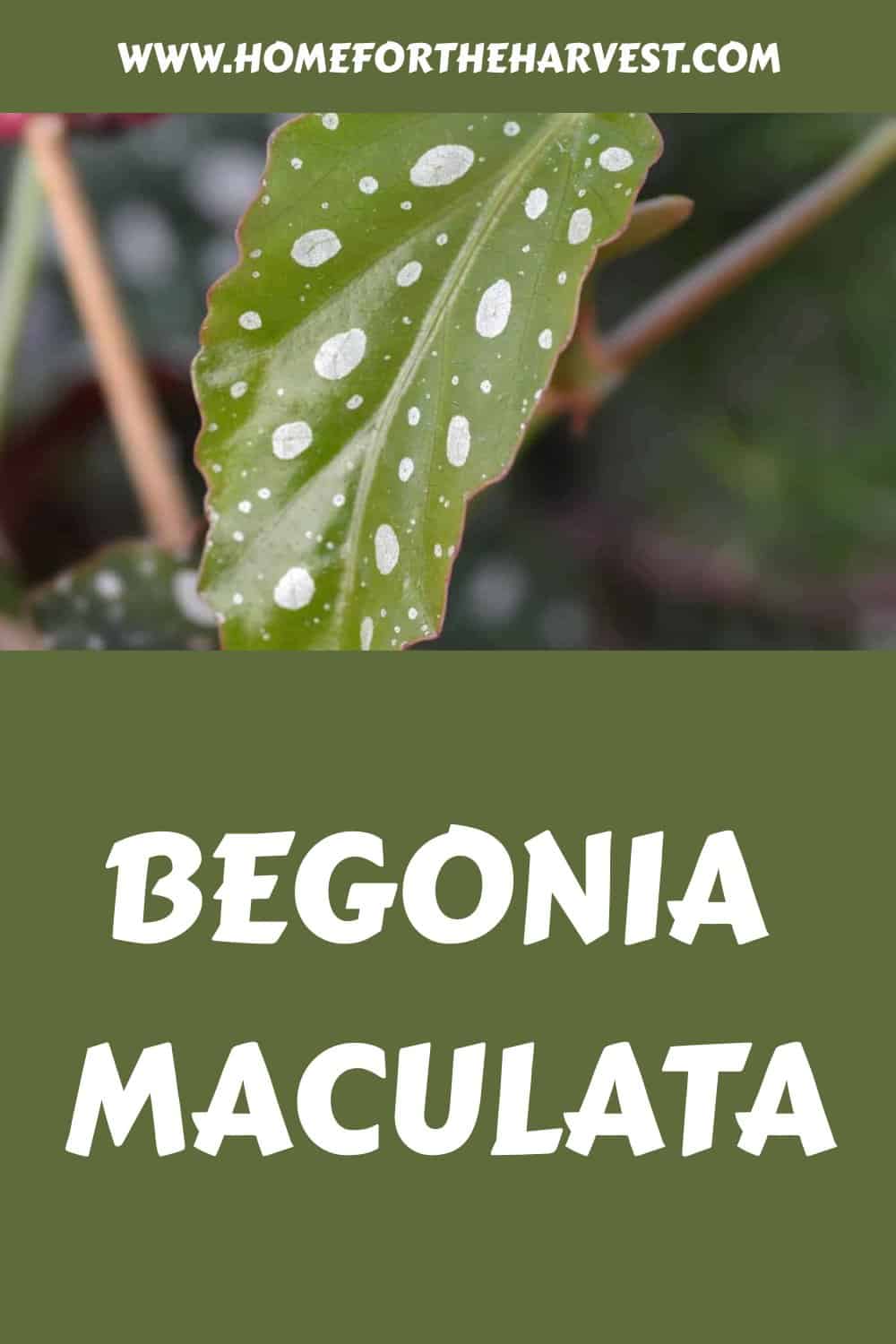Begonias are wonderful plants, with many varieties known for their gorgeous foliage. One of the most interesting begonias in terms of foliage is Begonia maculata – the Polka Dot Begonia.
Begonia Maculata, commonly called Polka Dot Begonia, is a tropical plant that grows wild in southeastern Brazil. These easy-care plants are becoming very popular as houseplants. They thrive in lower-light environments with somewhat humid air. Polka Dot Begonia plants grow best in well-draining soil. Overall, Begonia maculata is a wonderful low-maintenance indoor plant.
Read on to learn all about Begonia maculata – the Polka Dot Begonia!
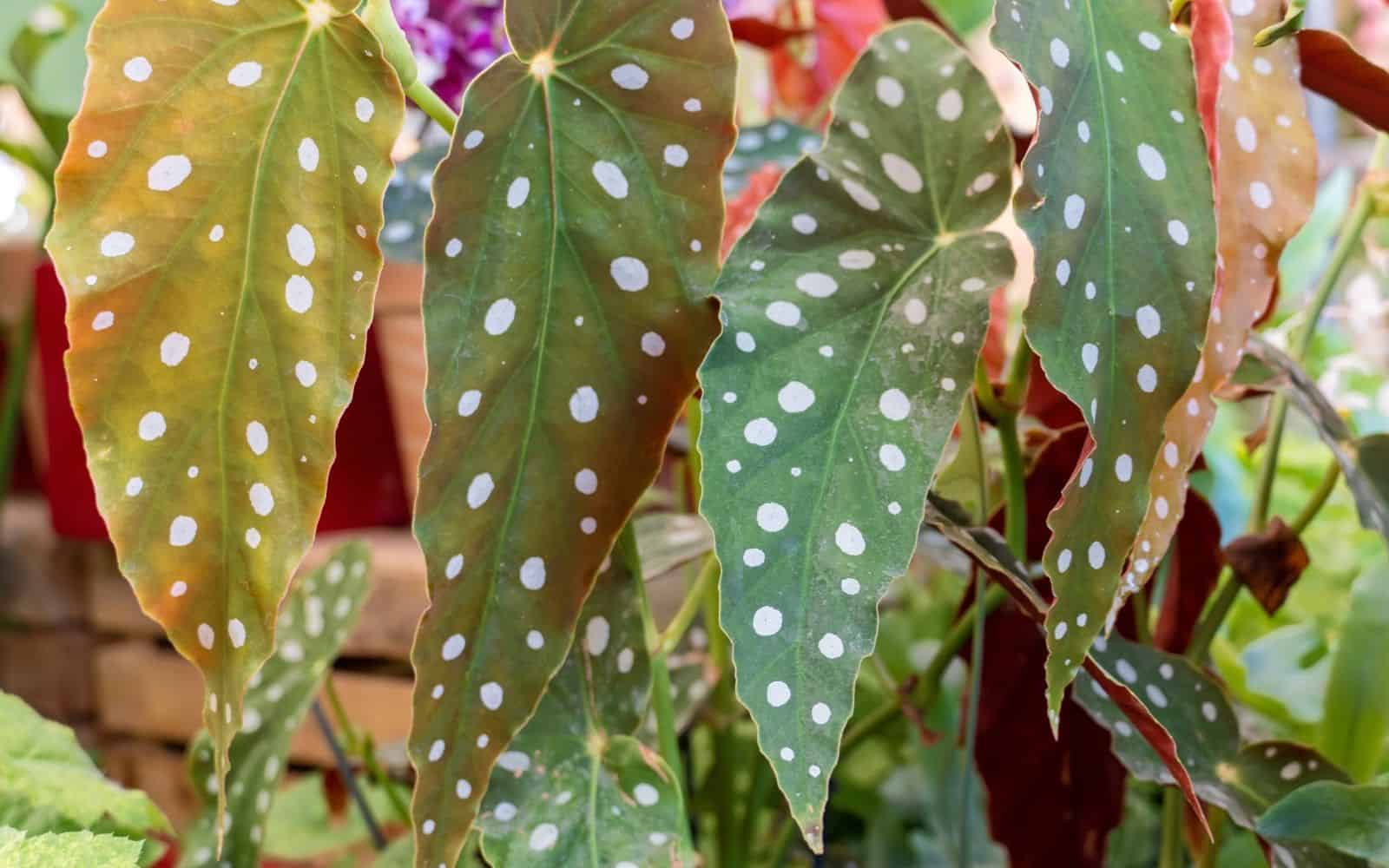
Begonia maculata: The basics
Begonia Maculata – the Polka Dot Begonia – is native to southeast Brazil. It naturally grows in the Atlantic rainforest, but also grows in Espírito Santo and Rio de Janeiro. The species has become invasive in some warmer locations of the southern USA. Begonia Maculata has a fibrous root system (not tuberous or rhizomatous), similar to the fibrous-rooted Angel Wing Begonia.
The Polka Dot Begonia’s botanical Latin name is Begonia maculata. Some other names for the Begonia maculata (in addition to Polka Dot Begonia) are Trout Begonia, Polka Dot Plant, Begonia Maculata Widgtii, and Spotted Begonia.
Begonia Maculata (Polka Dot Begonia) plants have long and skinny leaves with silvery-white dots spread over the top of each leaf. The bottom of the polka dot begonia is bright red, although the vibrancy of the red underside does vary. Begonia maculata leaves can grow to be 20-40 inches long, but only grow to be 4-20 inches wide.
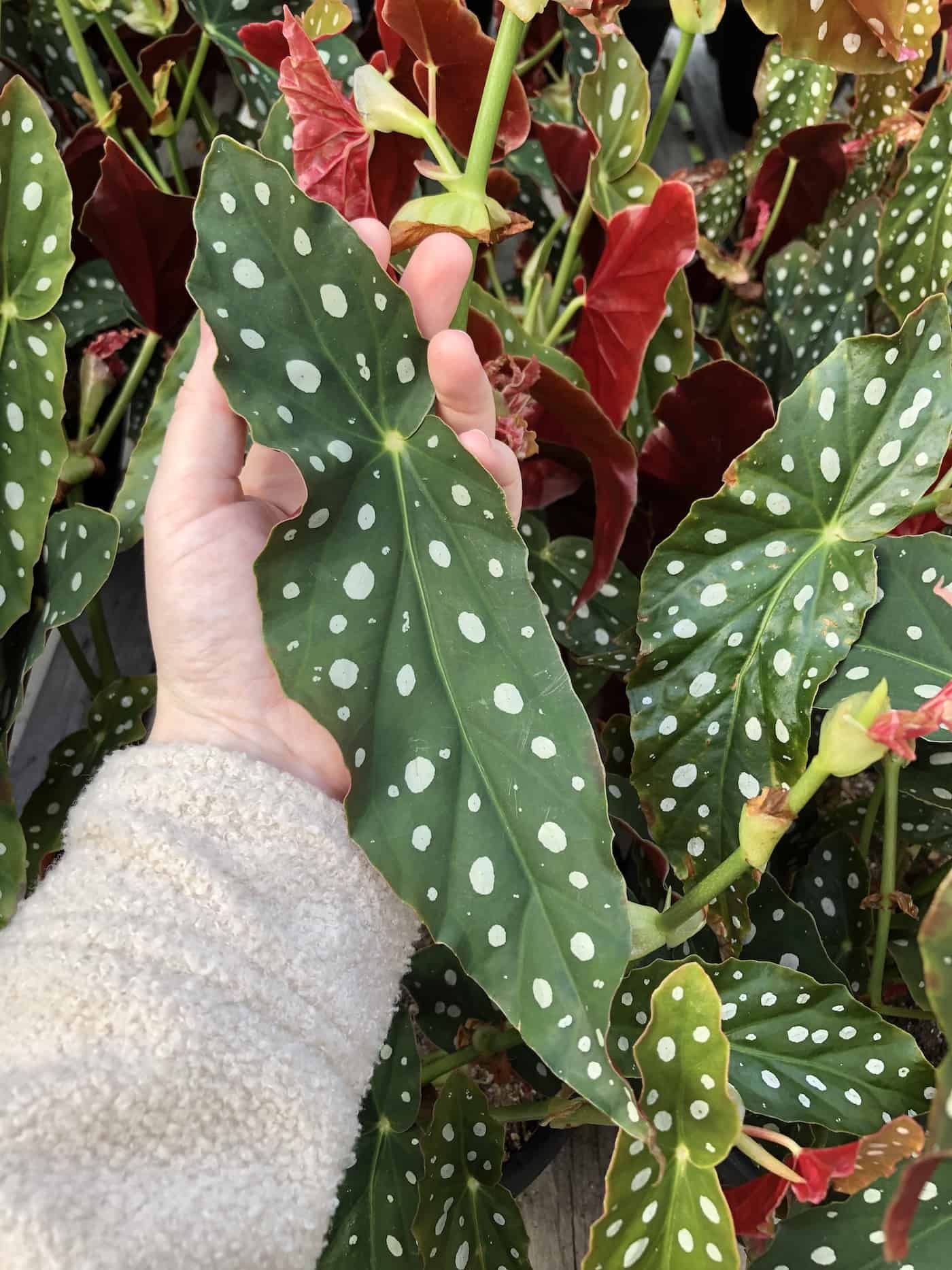
Polka dot begonias bloom once a year during the summer but can bloom up to 3 times a year if they are very healthy and in the correct environment to do so. When it blooms, very small white or pink blossoms that are smaller than 1 inch in diameter appear.
The polka dot begonia is one of the rarer begonias to grow, which is slightly odd because it is very easy to take care of and propagate.
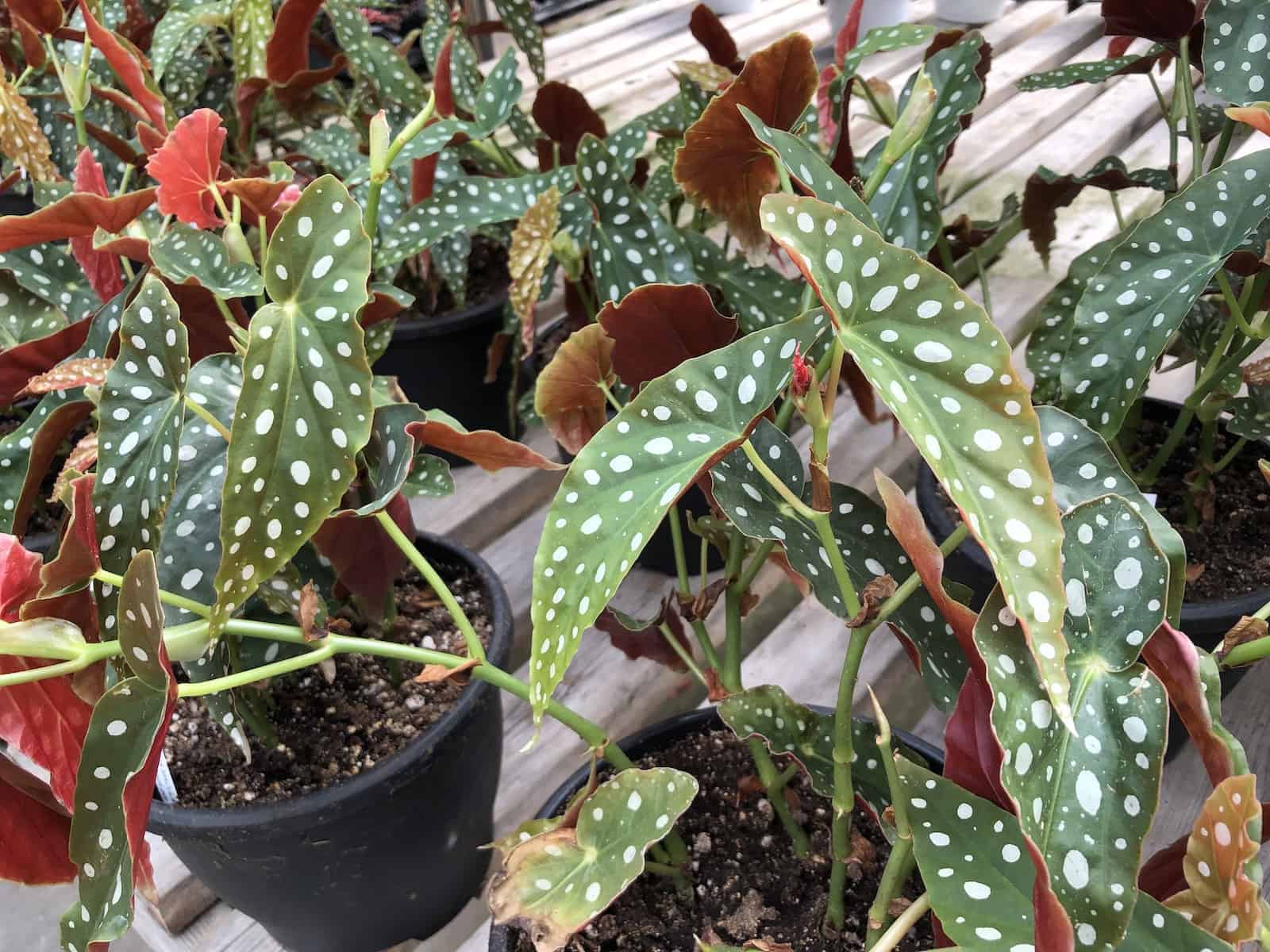
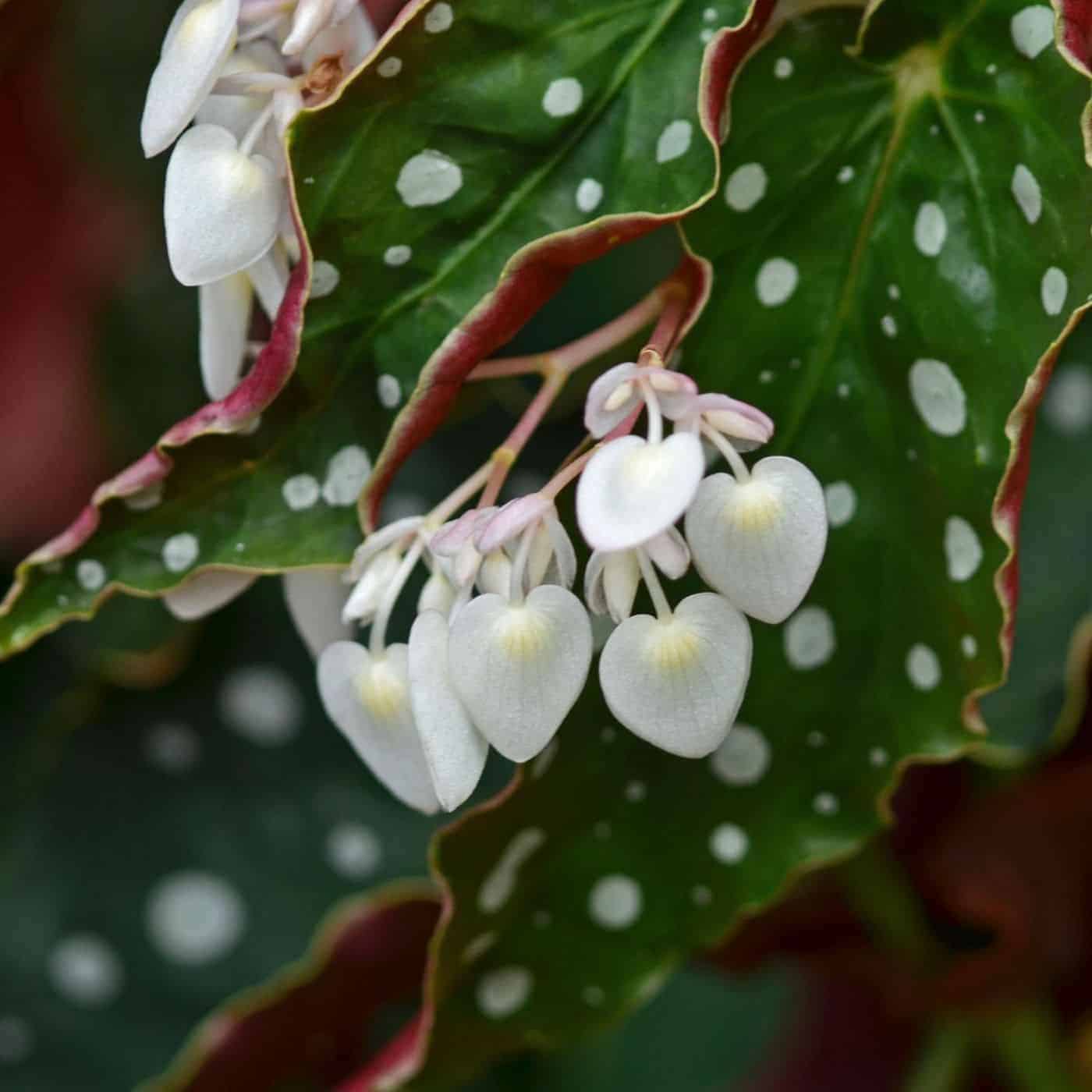
How to care for Begonia maculata
Begonia Maculata/Polka Dot Begonia is generally quite easy to care for as a houseplant.
Light requirements for Begonia maculata
Begonia Maculata requires partial shade when grown outdoors or in homes with ample natural light. It will dry out and the colors of the plant will become dull if in direct sunlight for too long. Keep it near a window, but make sure that it is not in harsh, direct sunlight.
While Begonia Maculata doesn’t thrive in direct sunlight, they do need minimum light levels to photosynthesize and produce the energy required to grow those beautiful leaves. Begonia plants grown indoors usually do better with a plant light above or beside them.
Watering Begonia maculata
Polka Dot Begonias enjoy being in humid environments but develop powdery mildew if they are overwatered. Do not water your Polka Dot Begonia daily. Instead, wait until the topsoil is fairly dry, and add water until the soil is moist, but not wet. Allow excess water to drain out of the soil (easiest if the plant is watered in the sink).
Either water your Begonia Maculata plants from the bottom by allowing the pots to sit in a sink or saucer of clean water, or water the top of the soil carefully. Watering these plants is easiest with a watering can that has a long skinny water spout.
Begonia Maculata/Polka Dot Begonia is generally not misted. The mist can leave a film on the leaves and could potentially encourage the growth of mildew on the foliage. If you want to mist your polka dot begonia, make sure you only spray the dirt and roots of the plant, not the leaves.
Potting soil for Begonia maculata
Begonia Maculata/Polka Dot Begonia plants grow best in a high-quality potting mix that drains well. Plant it in soil that has a mixture of sand, clay, and loamy soil. Make sure that the soil does not hold excess moisture.
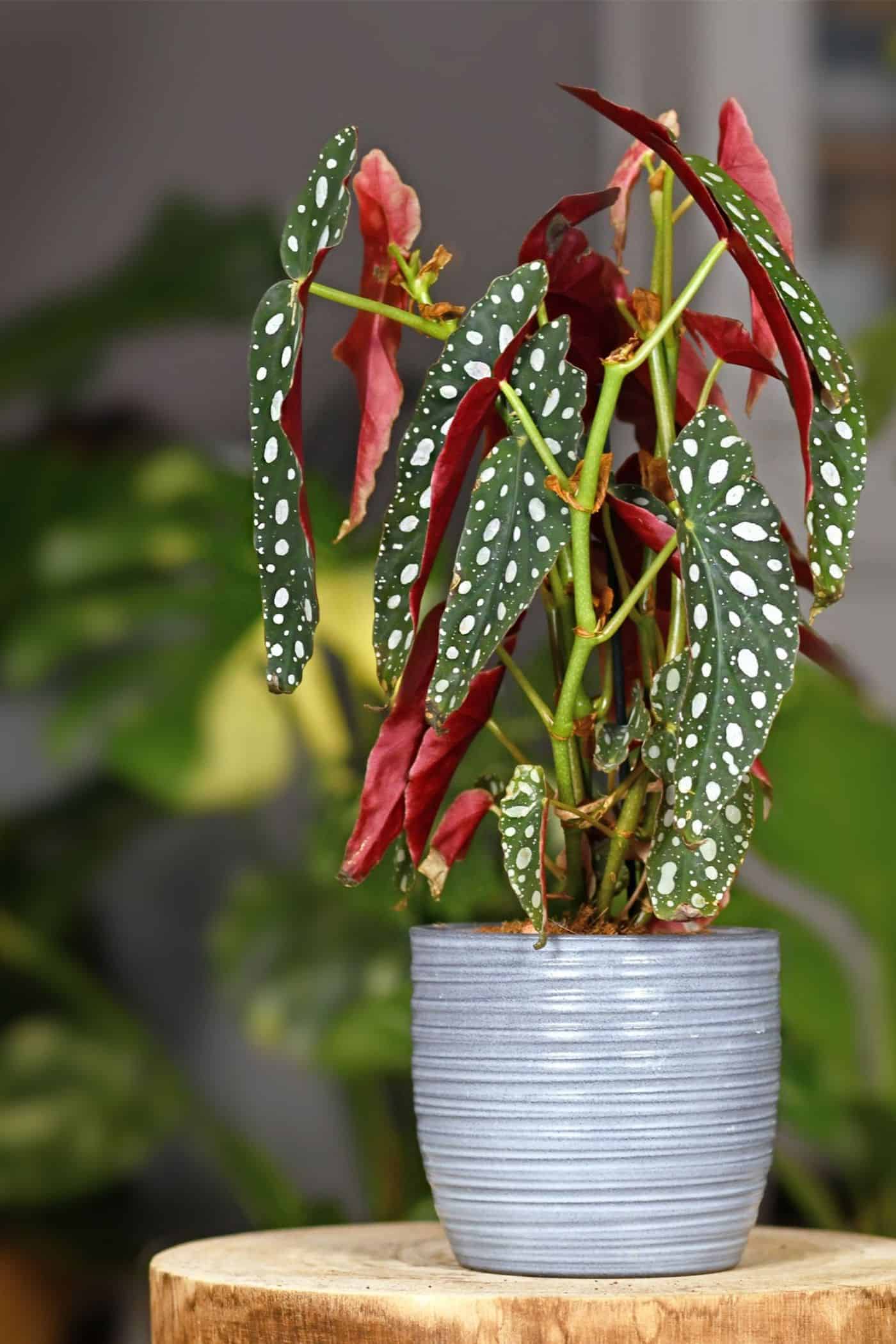
Fertilizer for Begonia maculata
Begonia Maculata/Polka Dot Begonia plants can be fertilized with natural houseplant fertilizer. Most growers do so only in the spring-summer months during the growing season. It is best to add fertilizer between April and September. Follow the instructions on the specific fertilizer you choose.
Planters & pots for Begonia maculata
When you put a Polka Dot Begonia in a pot or planter, make sure that it has drainage holes in the bottom. As your Polka Dot Begonia grows, you may need to add support, like stakes or sticks that your Begonia can grow on. You may need to tie the Begonia stems to the stakes.
You should repot your Begonia Maculata once every year or when it seems to have outgrown the pot that it is currently in. When you repot your Begonia, place it in a pot that is at least a few inches wider than the previous container so it has plenty of room to grow, and so the roots do not become root-bound again too quickly.
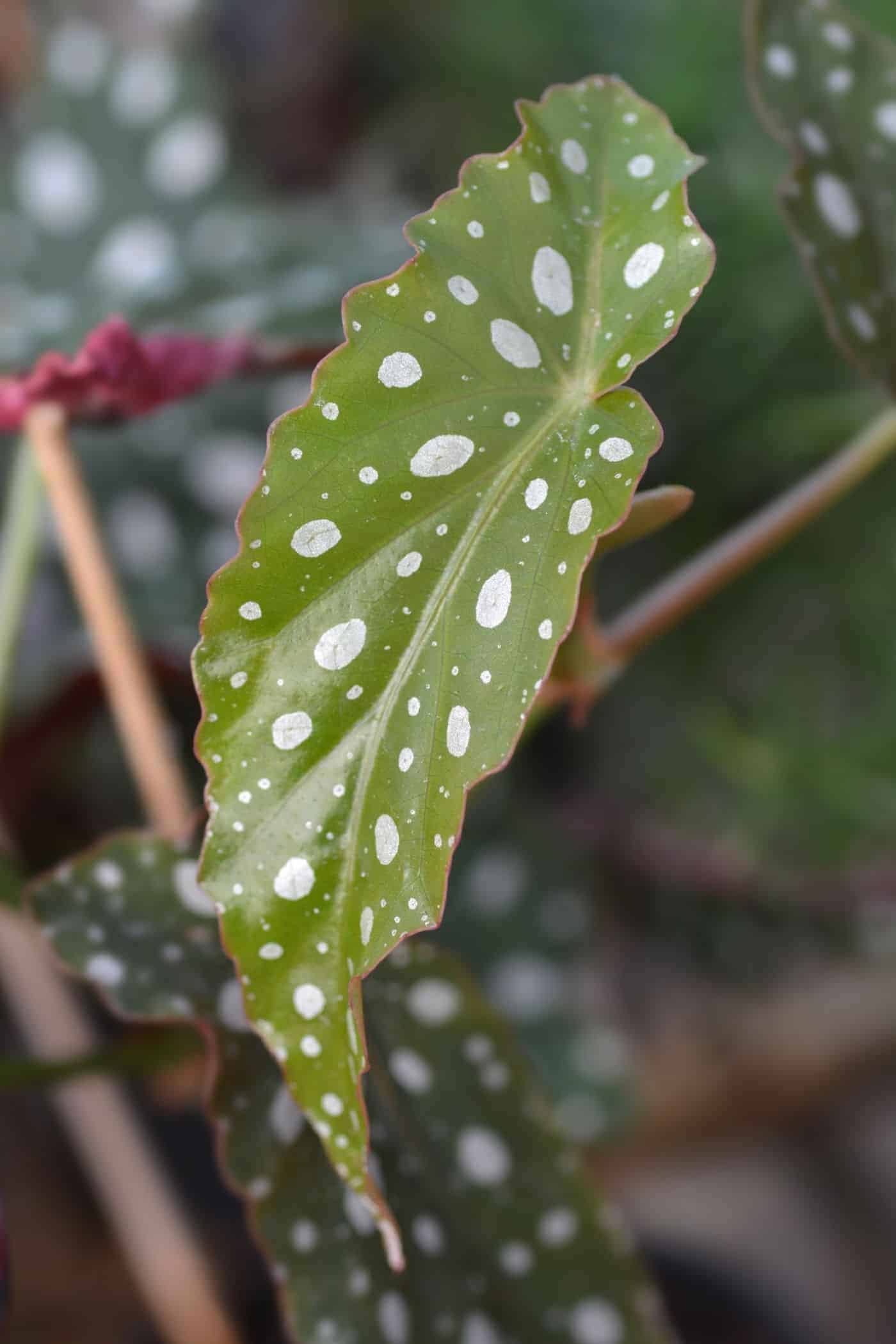
Polka Dot Begonia propagation
The Polka Dot Begonia (Begonia maculata) is very easy to propagate. In fact, it is one of the easiest plants to propagate, so any home gardener can do it if they want to.
If you want to propagate your polka dot begonia, cut off a leaf that has been growing for a while. Cut off the leaf where it meets the stem, but leave a small part of the stem on the leaf that you are removing.
Then, put the leaf in a glass jar that has filtered water in it, but is not filled to the brim, and place the jar where it will be in indirect sunlight. When you put the leaf in the filtered water, make sure that the stem is the only part that is in the water. Do not let the actual leaf sit in the water. Change out the water every 3-5 days with fresh, filtered water.
After a few weeks, you should see several small, hair-like roots growing from your leaf. Once you see many of these roots have grown, move your propagated leaf into a small pot that has fresh soil. You should see more leaves growing from your propagated leaf within a few weeks after you place it into the soil.
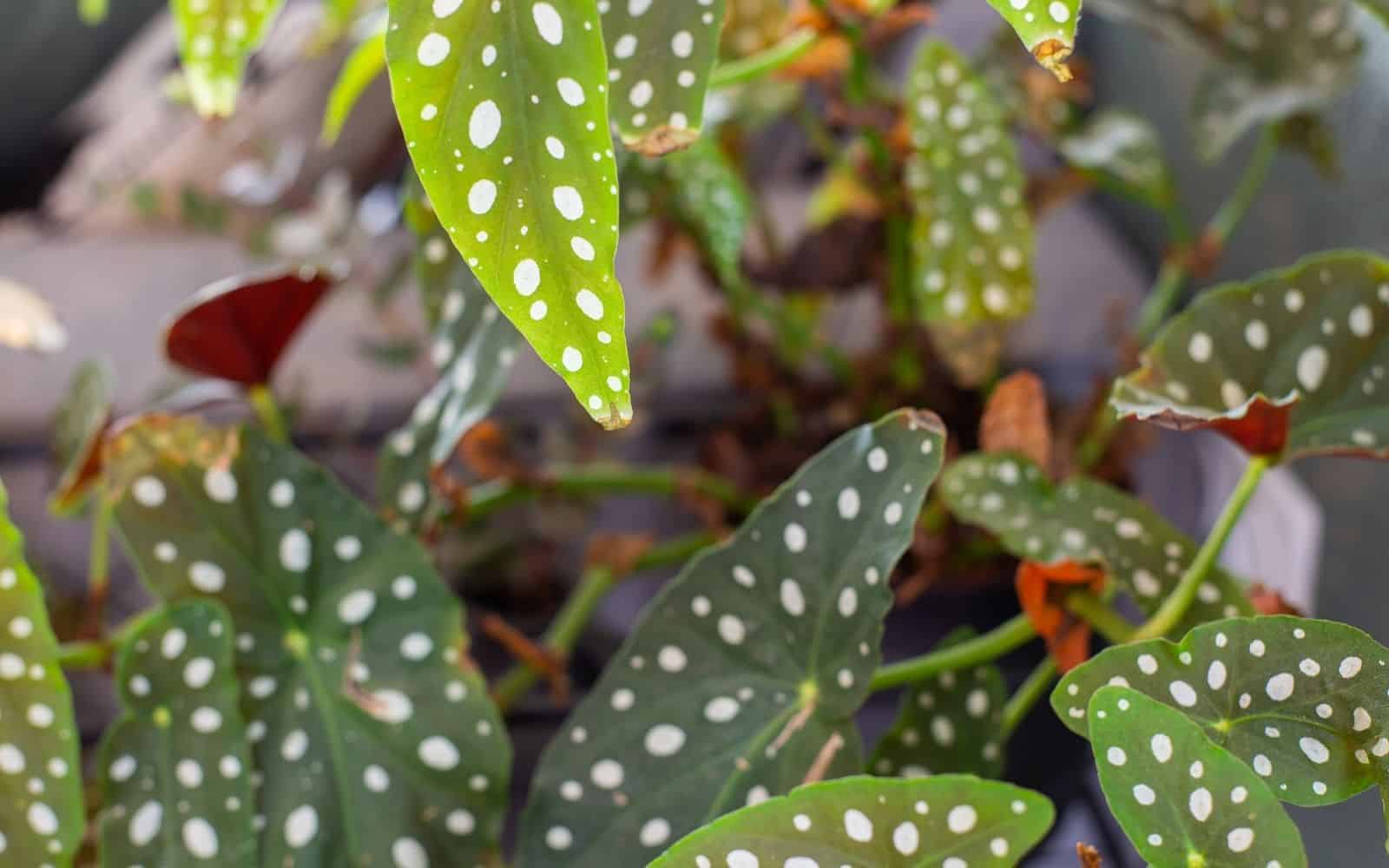
Now that you know more about the Begonia Maculata/Polka Dot Begonia, you can go purchase one and allow it to grow inside of your home. They are very easy to care for, and you can find them at any local gardening store or plant nursery.


